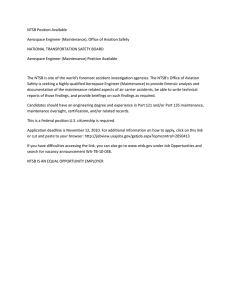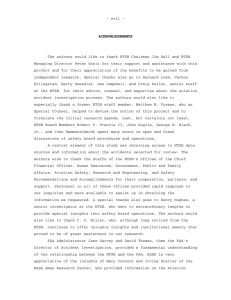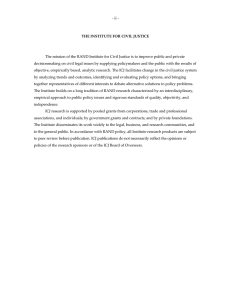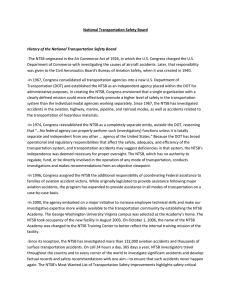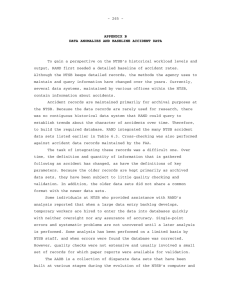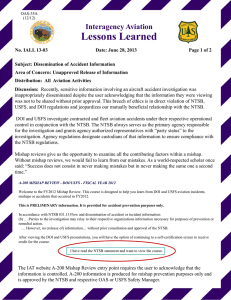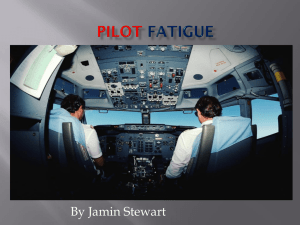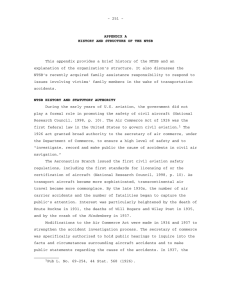- xiii - PREFACE
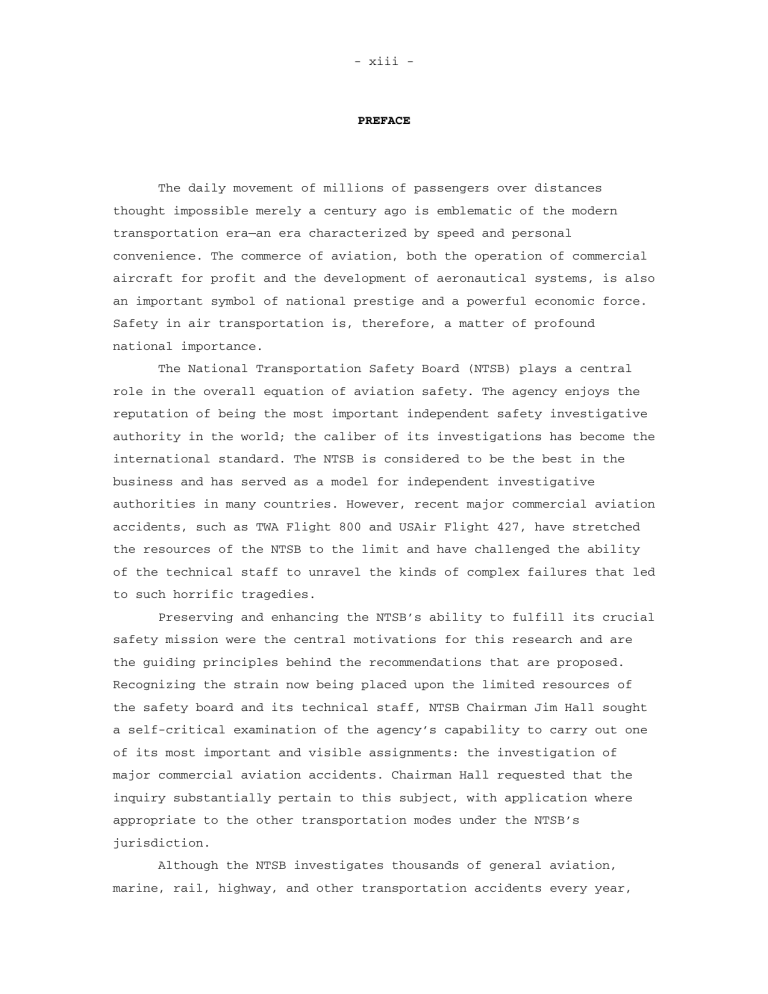
- xiii -
PREFACE
The daily movement of millions of passengers over distances thought impossible merely a century ago is emblematic of the modern transportation era—an era characterized by speed and personal convenience. The commerce of aviation, both the operation of commercial aircraft for profit and the development of aeronautical systems, is also an important symbol of national prestige and a powerful economic force.
Safety in air transportation is, therefore, a matter of profound national importance.
The National Transportation Safety Board (NTSB) plays a central role in the overall equation of aviation safety. The agency enjoys the reputation of being the most important independent safety investigative authority in the world; the caliber of its investigations has become the international standard. The NTSB is considered to be the best in the business and has served as a model for independent investigative authorities in many countries. However, recent major commercial aviation accidents, such as TWA Flight 800 and USAir Flight 427, have stretched the resources of the NTSB to the limit and have challenged the ability of the technical staff to unravel the kinds of complex failures that led to such horrific tragedies.
Preserving and enhancing the NTSB’s ability to fulfill its crucial safety mission were the central motivations for this research and are the guiding principles behind the recommendations that are proposed.
Recognizing the strain now being placed upon the limited resources of the safety board and its technical staff, NTSB Chairman Jim Hall sought a self-critical examination of the agency’s capability to carry out one of its most important and visible assignments: the investigation of major commercial aviation accidents. Chairman Hall requested that the inquiry substantially pertain to this subject, with application where appropriate to the other transportation modes under the NTSB’s jurisdiction.
Although the NTSB investigates thousands of general aviation, marine, rail, highway, and other transportation accidents every year,
- xiv the public reputation and credibility of the safety board substantially rest on its ability to determine the cause of major commercial aviation accidents. It is also in this area that the NTSB’s independence has been most vigorously challenged by the many stakeholders whose interests may be affected by the outcome of an investigation.
In undertaking this research, RAND was able to involve personnel with expertise in several disciplines from three RAND programs: the
Institute for Civil Justice, the Science and Technology Policy
Institute, and Project AIR FORCE. This multidisciplinary approach enabled the researchers to use a variety of quantitative and qualitative research techniques to examine the inner workings of the NTSB closely.
This research provides the most comprehensive examination of NTSB operations that has ever been undertaken in the 30-year history of the agency.
We commend this report to serious consideration by the NTSB and all the affected interest groups and stakeholders involved with the investigation of major commercial aviation and other transportation accidents. The report offers significant insights into the existing investigative process and, at the same time, sets forth important recommendations aimed at strengthening the safety board’s ability to carry out its essential safety mission. We believe the report makes a significant contribution to assuring the safety of the traveling public and to the advancement of public policymaking in this most important field.
For information about the Institute for Civil Justice, contact
Beth Giddens, Communications Director
Institute for Civil Justice
RAND
1700 Main Street, P.O. Box 2138
Santa Monica, CA 90407-2138
Phone: (310) 393-0411 x7893
Fax: (310) 451-6979
E-mail: elizabeth_giddens@rand.org
- xv -
Westlaw is the exclusive online distributor of RAND/ICJ materials.
You may find the full text of many ICJ documents at http://www.westlaw.com. A profile of the ICJ, summaries of all its studies, and electronic order forms can be found on RAND’s home page on the World Wide Web at http://www.rand.org/centers/icj.
